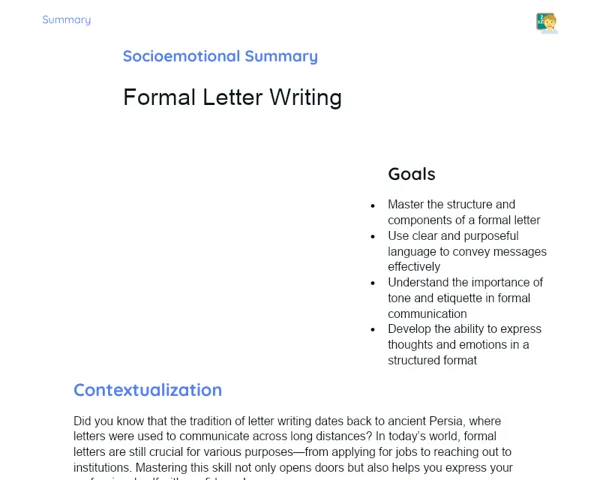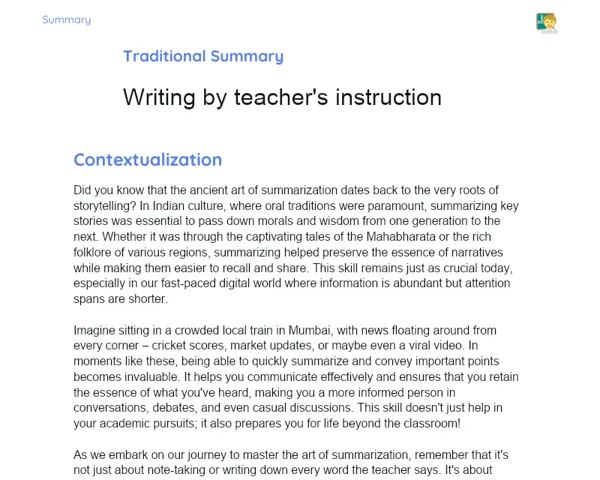Objectives
1. Identify and correctly apply the plural of nouns in English.
2. Recognize whether a noun is in singular or plural, as well as understand the rules and exceptions in forming plurals.
Contextualization
Have you ever noticed how using plurals accurately can completely shift the meaning of a sentence in English? For instance, the difference between 'one fish' and 'two fish' is not just about counting but also how we modify the word 'fish' to imply more than one. These subtle variations are crucial for effective communication, whether in daily chats or formal discussions. Getting a grip on plurals in English goes beyond grammar; it’s an essential skill for conveying your thoughts with precision.
Important Topics
Addition of 'S' and 'ES'
A fundamental rule for building plurals in English is to add 's' for most nouns, and 'es' for those that end in s, sh, ch, x, or z. For instance, 'book' becomes 'books' and 'box' transforms into 'boxes'. This rule is widespread across various nouns, making it vital for anyone striving for fluency in English.
-
Nouns ending in vowel + y: change 'y' to 'ies' (example: baby - babies).
-
Nouns ending in consonant + y: simply add 's' (example: boy - boys).
-
Nouns ending in 's, sh, ch, x, z': stick with 'es' (example: buzz - buzzes).
Irregular Nouns
Certain nouns in English have entirely irregular plural forms that don't comply with any particular rule. For example, 'child' in singular becomes 'children' in plural. It's crucial to memorize these exceptions since they are frequently used and key for fluent communication.
-
Some stay the same: fish - fish.
-
Vowel change for some: foot - feet.
-
Complete change in form: person - people.
Compound Plurals
When it comes to forming compound plurals in English, we only add 's' or 'es' to the last part. For instance, 'brother-in-law' in singular becomes 'brothers-in-law' in plural. Grasping this rule can prevent common errors and ensure correct pluralization in complex situations.
-
Add 's' or 'es' to the last element: 'court-martial' - 'courts-martial'.
-
The order of elements doesn’t change the plural: 'mother-in-law' - 'mothers-in-law'.
-
Compound nouns with 'man' typically change to 'men' in plural: 'salesman' - 'salesmen'.
Key Terms
-
Plural: the form of a noun that indicates more than one.
-
Singular: the form of a noun that indicates only one.
-
Regular: nouns that form the plural following predictable rules, like adding 's' or 'es'.
-
Irregular: nouns that do not follow the usual rules for plural formation in English.
For Reflection
-
How does grasping the rules of pluralization enhance your capability to communicate effectively in English?
-
Why is it vital to know irregular nouns in English, despite their nonconformity to specific pluralization rules?
-
In what ways can mishandling plurals hinder the understanding of a message during conversations or while reading in English?
Important Conclusions
-
In this session, we delved into the essential rules for forming plurals of nouns in English, covering the addition of 's' and 'es' as well as irregular forms.
-
We conversed about how proper plural usage is key for clear and effective communication, underscoring examples of how even minor adjustments in pluralization can significantly modify a sentence's meaning.
-
We practiced applying these rules in everyday scenarios and more formal contexts, recognizing the value of plurals in achieving fluency in English.
To Exercise Knowledge
Keep a plural diary for one week: jot down whenever you use or hear plurals in English throughout your daily routines. Try to determine if the plural was used correctly; if not, correct it and explain which rule should have been applied.
Challenge
Lost Plural Challenge: Select a paragraph from an English book or article and remove all plurals, substituting them with their singular forms while applying the relevant pluralization rules. Compare your version with the original and see how it improves your understanding of plural rules!
Study Tips
-
Create flashcards with singular nouns on one side and their plurals on the other. Use them for regular review and make practicing forming plurals enjoyable.
-
Watch movies or shows in English and try to spot and note the plurals that come up. This will help you observe the rules of pluralization in action.
-
Pair up with a colleague: compile lists of nouns and challenge one another to correctly form their plurals, along with explaining the rules applied.



